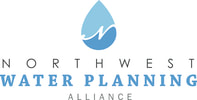|
How can the price of water in your community be changed to promote water conservation? How can municipalities price water to keep basic needs and services affordable for all residents while promoting reduced use? And what are the long-term benefits for the municipality? What is conservation pricing? Conservation pricing is water rate structures that motivate consumers to use water efficiently. These structures come in many forms, such as uniform rates, tiered rates, seasonal rates, and water budget-based rates. For all of these rate structures, wasteful or inefficient water use is more costly for customers than using only what they really need for drinking, cooking, sanitation, and cleaning. Why implement conservation pricing?
There are many reasons to implement conservation pricing – decreasing average daily or peak hourly demands, free up capacity to service new customers or eliminate the need for costly expansion costs, and sustainability. In general, conservation is a long-term cost reducer for the utility. Where is this happening in the NWPA region? Conservation pricing is not widely used in the NWPA region, but two municipalities have paved the way in showing the potential benefits. In Algonquin, the village implemented a seasonal water rate in conjunction with a comprehensive water conservation plan to address growing demand in the early 2000’s. Despite 7,000 new residents, water demand per day remained constant and average peak demand in summer has fallen. St. Charles for many years has used an excess seasonal water rate to encourage conservation of outdoor water during peak summer water demand months. The rate applies to water use greater than 130 percent of monthly winter average water use, and which is greater than 6,500 gallons per month usage. All other water is billed at the base rate. How does conservation pricing impact low income consumers? It is possible to design a rate structure that addresses the concern that conservation pricing will adversely impact low income customers. Most notably, conservation prices should not be applied to the water use tier that encompasses essential use. Some utilities offer a lifeline rate covering the amount of water required for essential use, and/or subsidies and assistance programs. Other systems use excess revenue from conservation pricing to establish an assistance program, ask for voluntary donations to an assistance program, or spread assistance program costs across other customers. Communicating with the public about conservation pricing Communicating with the public before the new rate takes effect through public involvement programs is important, as customers often will respond negatively to rate increases. Conveying the impact of artificially low rates to system maintenance (images of pipe conditions, etc.) can help utilities sell rate increases to councils, boards, and the public. Taking an incremental approach to implementation, including phasing in the necessary rate increase over time, can help build public support. Coupling a rate increase with conservation program elements that give customers the option to manage their bills can also help to increase acceptance. Adapted from “Understanding Conservation Pricing,” Illinois Indiana Sea-Grant, January 2019. Comments are closed.
|
ABOUTThe latest updates page features posts about issues affecting NWPA member communities and best practices, drawing on interviews and conversations with experts. Archives
July 2024
Categories
All
|
